Ditapis dengan
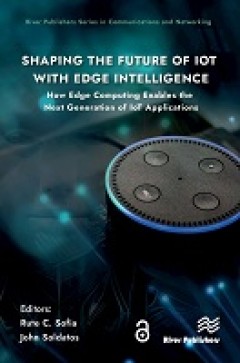
E-Book Shaping the Future of IoT with Edge Intelligence
This book presents the technologies that empower edge intelligence, along with their use in novel IoT solutions. Specifically, it presents how 5G/6G, Edge AI, and Blockchain solutions enable novel IoT-based decentralized intelligence use cases at the edge of the cloud/edge/IoT continuum. Emphasis is placed on presenting how these technologies support a wide array of functional and non-functiona…
- Edisi
- -
- ISBN/ISSN
- 9788770040273
- Deskripsi Fisik
- 460 halaman
- Judul Seri
- -
- No. Panggil
- 006.3 SOF s
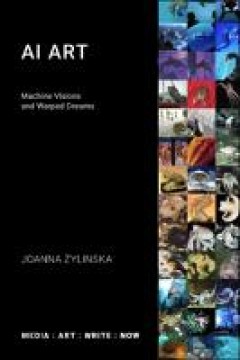
E-Book AI Art
Can computers be creative? Is algorithmic art just a form of Candy Crush? Cutting through the smoke and mirrors surrounding computation, robotics and artificial intelligence, Joanna Zylinska argues that, to understand the promise of AI for the creative fields, we must not confine ourselves solely to the realm of aesthetics. Instead, we need to address the role and position of the human in the c…
- Edisi
- -
- ISBN/ISSN
- 9781785420863
- Deskripsi Fisik
- 181 halaman
- Judul Seri
- -
- No. Panggil
- 006.3 ZYL a
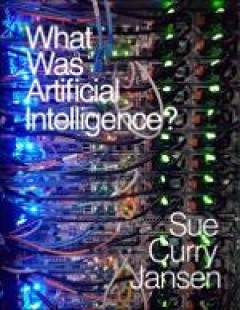
E-Book What Was Artificial Intelligence?
When it was originally published in 2002, Sue Curry Jansen’s “What Was Artificial Intelligence?” attracted little notice. The long essay was published as a chapter in Jansen’s Critical Communication Theory, a book whose wisdom and erudition failed to register across the many fields it addressed. One explanation for the neglect, ironic and telling, is that Jansen’s sheer scope as an in…
- Edisi
- -
- ISBN/ISSN
- 9781951399061
- Deskripsi Fisik
- 37 halaman
- Judul Seri
- -
- No. Panggil
- 006.03 CUR w
E-book Mission AI : The New System Technology
This report, published by the Scientific Council for Government Policy (WRR), has been written entirely by humans. Likewise, we expect that advisory reports like this one will continue to be written by humans. The same applies to the larger part of journalism, despite what the introductory quote might suggest. In fact, it later became apparent that humans had indeed written m…
- Edisi
- -
- ISBN/ISSN
- 9783031214486
- Deskripsi Fisik
- 421 hlm
- Judul Seri
- -
- No. Panggil
- 006.3 SHE m
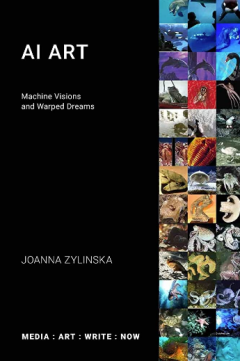
E-book AI Art : machine visions and warped dreams
Can computers be creative? Is algorithmic art just a form of Candy Crush? Cutting through the smoke and mirrors surrounding computation, robotics and artificial intelligence, Joanna Zylinska argues that, to understand the promise of AI for the creative fields, we must not confine ourselves solely to the realm of aesthetics. Instead, we need to address the role and position of the human in the c…
- Edisi
- -
- ISBN/ISSN
- 9781785420856
- Deskripsi Fisik
- 181 hlm. : color, ill.
- Judul Seri
- -
- No. Panggil
- 111.85 ZYL a
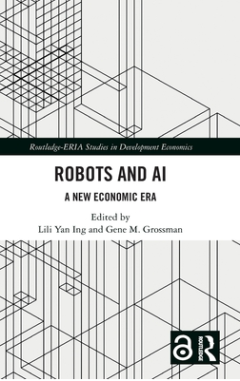
E-book Robots and AI
Robots and artificial intelligence (AI) are powerful forces that will likely have large impacts on the size, direction, and composition of international trade flows. This book discusses how industrial robots, automation, and AI affect international growth, trade, productivity, employment, wages, and welfare. The book explains new approaches on how robots and artificial intelligence affect the w…
- Edisi
- -
- ISBN/ISSN
- 9781003275534
- Deskripsi Fisik
- -
- Judul Seri
- -
- No. Panggil
- 629 ING r
E-book Reinforcement Learning : An Introduction
The idea that we learn by interacting with our environment is probably the first to occur to us when we think about the nature of learning. When an infant plays, waves its arms, or looks about, it has no explicit teacher, but it does have a direct sensorimotor connection to its environment. Exercising this connection produces a wealth of information about cause and effect, about the consequence…
- Edisi
- -
- ISBN/ISSN
- 9780262039246
- Deskripsi Fisik
- -
- Judul Seri
- -
- No. Panggil
- 006.3 SUT r
E-book Making AI Intelligible : Philosophical Foundations
Thus we are not going to talk about the consequences that the new wave in AI might have for the empiricism/rationalism debate (see Buckner 2018), nor are we going to consider—much—the question of whether it is reasonable to say that what these programs do is ‘learning’ in anything like the sense with which we are familiar (Buckner 2019, 4.2), and we’ll pass over interestin…
- Edisi
- -
- ISBN/ISSN
- 9780192894724
- Deskripsi Fisik
- 184 hlm
- Judul Seri
- -
- No. Panggil
- 006.3 CAP m
E-book Artificial Intelligence : A Modern Approach
We call ourselves Homo sapiens—man the wise—because our intelligence is so important to us. For thousands of years, we have tried to understand how we think; that is, how a mere handful of matter can perceive, understand, predict, and manipulate a world far larger and more complicated than itself. The field of artificial intelligence, or AI, goes further still: it ARTIFICIAL INTELLIGENCE at…
- Edisi
- 3rd ed.
- ISBN/ISSN
- 9780136042594
- Deskripsi Fisik
- 1151 hlm
- Judul Seri
- -
- No. Panggil
- 006.3 RUS a
E-book Strategi Nasional Kecerdasan Artifisial Indonesia tahun 2020 - 2045
Indonesia merupakan negara yang strategis yang berbentuk kepulauan dengan jumlah penduduk yang banyak dengan keberagaman budaya dan kearifan lokal serta memiliki pertumbuhan ekonomi yang terus meningkat dari tahun ketahun. Maka Indonesia memiliki sejuta peluang dalam pemanfaatan Kecerdasan Artifisial (KA) karena teknologi ini dapat berpotensi memberikan peningkatan produktivitas bagi bisnis, ef…
- Edisi
- -
- ISBN/ISSN
- -
- Deskripsi Fisik
- 194 hlm
- Judul Seri
- -
- No. Panggil
- 006.3 TIM s

Neuro Fuzzy and Soft Computing
Soft computing is an innovative approach to constructing computationally intelligent systems, has just come into the limelight. Its now realized that complex real world problems require intelligent systems that combine knowledge, techniques, and methodologies from various sources.
- Edisi
- -
- ISBN/ISSN
- 0132874679
- Deskripsi Fisik
- xxvi; 604 hal; 18 x 24 cm
- Judul Seri
- -
- No. Panggil
- 006.3 JSR n
E-book AI art : Machine visions and warped dreams
AI Art has been shaped by a number of broader questions with regard to art, media and technology: Is there an ontological difference between early computergenerated art, net art and the more recent forms of AI-driven art? Or is it just a difference of degree, i.e. of the mode and intensity of technological entanglement?
- Edisi
- -
- ISBN/ISSN
- -
- Deskripsi Fisik
- 181 hlm; 10 MB
- Judul Seri
- -
- No. Panggil
- 006.3 ZYL a

Mengenal artificial intelligence
- Edisi
- -
- ISBN/ISSN
- -
- Deskripsi Fisik
- xii+257 hlm;15x22cm
- Judul Seri
- -
- No. Panggil
- 001.56 SUP m
- Edisi
- -
- ISBN/ISSN
- -
- Deskripsi Fisik
- xii+257 hlm;15x22cm
- Judul Seri
- -
- No. Panggil
- 001.56 SUP m
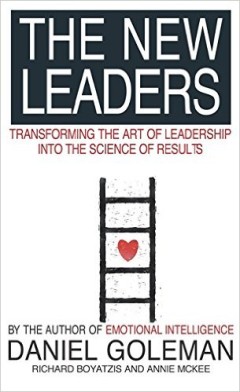
The new leaders : Transforming the art of leadership into the science of results
As business reinvents itself at broadband speed, what makes leaders effective has inevitably been transformed. Old assumptions and old modes no longer hold; a new style of leadership that works has emerged amidst the chaos of change. This new leader excels in the art of relationship, the singular expertise which the changing business climate renders indispensable. Excellence is being defined in…
- Edisi
- Edisi Pertama
- ISBN/ISSN
- 0-7515-3381-5
- Deskripsi Fisik
- xvi + 394 pgs. 13 x 20 cm
- Judul Seri
- -
- No. Panggil
- 153 GOL t

How to multiply your child's intelligence : A practical guide for parents of …
You've heard of IQ. You've heard if EQ. And you definitely know the importance of getting good gredes at school. But do you know that there are far more contributing factors to success? How to Multiply your child's intelligece takes you beyond 'A's and examinations to explain why some seeminglly hopeless cases emerge as high achievers later on. It introduces seven intelligences inherent in ev…
- Edisi
- cet. 1
- ISBN/ISSN
- 0131013556
- Deskripsi Fisik
- viii + 285 pages; illus. 15,5 x 23,5 cm
- Judul Seri
- -
- No. Panggil
- 153 LWI h

Artificial intelligence
- Edisi
- 1th edition
- ISBN/ISSN
- 0809456753
- Deskripsi Fisik
- 128 Pgs.; illus. 23,5 x 28 cm
- Judul Seri
- Understanding computer
- No. Panggil
- 006.3 CON a
- Edisi
- 1th edition
- ISBN/ISSN
- 0809456753
- Deskripsi Fisik
- 128 Pgs.; illus. 23,5 x 28 cm
- Judul Seri
- Understanding computer
- No. Panggil
- 006.3 CON a
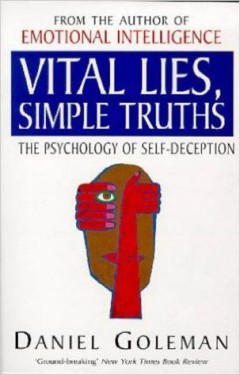
Vital Lies, Simple truths : The psychology of self-deception
Vital Lies, Simple Truths is a penetrating analysis of the ways in which we deceive ourselves. Daniel Goleman draws on evidence of all kinds - from brain function to social dynamics - to reveal how we must distort our most intimate relationships and our day-to-day lives by burying painful insights and memories. This self-deception is our means of psychological self-preservation, the currency of…
- Edisi
- cet. 1
- ISBN/ISSN
- 0-7475-3499-3
- Deskripsi Fisik
- 287 pgs. 18 x 20 cm
- Judul Seri
- -
- No. Panggil
- 153 GOL v

Working with emotional intelligence
career? The secret of success is not what they taught you in school. What matters most is not IQ, not a business school degree, not even technical know-how or years of expertise. The single most important factor in job performance and advancement is emotional intelligence. Emotional intelligence is actually a set of skills that anyone can acquire, and in this practical guide, Daniel Goleman id…
- Edisi
- cet. 1
- ISBN/ISSN
- 0-7475-4384-4
- Deskripsi Fisik
- xi + 383 pgs. 13 x 20 cm
- Judul Seri
- -
- No. Panggil
- 153 GOL w
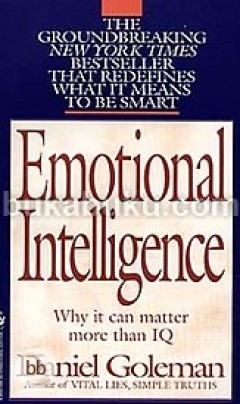
Emotional intelligence : Why it can matter more than IQ
Is IQ destiny? Not nearly as much as we think. Daniel Goleman's fasinaing ang persuasive book argues that our view of intelligence is too narrow, ignoring a crucial range of abilities that matter immensely for how we do in life. Drawing on groundbreaking brain and behavioral research, Goleman shows the factors at work when people of high IQ flounder and those of modest IQ do surprisingly well.…
- Edisi
- cet. 1
- ISBN/ISSN
- 0-7475-4384-4
- Deskripsi Fisik
- xv + 413 pgs. 10,5 x 17,5 cm
- Judul Seri
- -
- No. Panggil
- 153 GOL w
 Karya Umum
Karya Umum  Filsafat
Filsafat  Agama
Agama  Ilmu-ilmu Sosial
Ilmu-ilmu Sosial  Bahasa
Bahasa  Ilmu-ilmu Murni
Ilmu-ilmu Murni  Ilmu-ilmu Terapan
Ilmu-ilmu Terapan  Kesenian, Hiburan, dan Olahraga
Kesenian, Hiburan, dan Olahraga  Kesusastraan
Kesusastraan  Geografi dan Sejarah
Geografi dan Sejarah